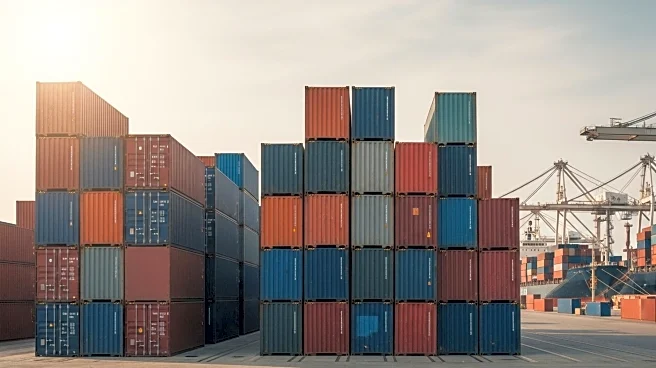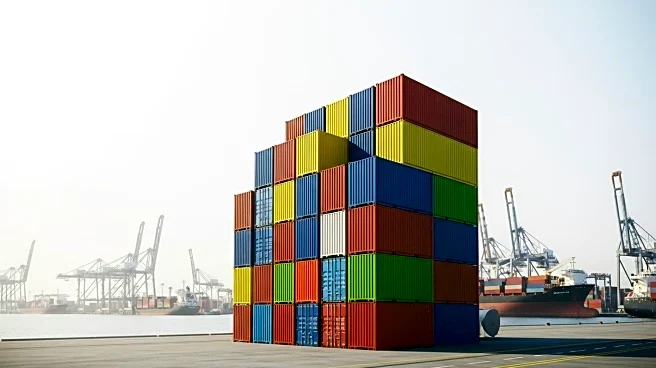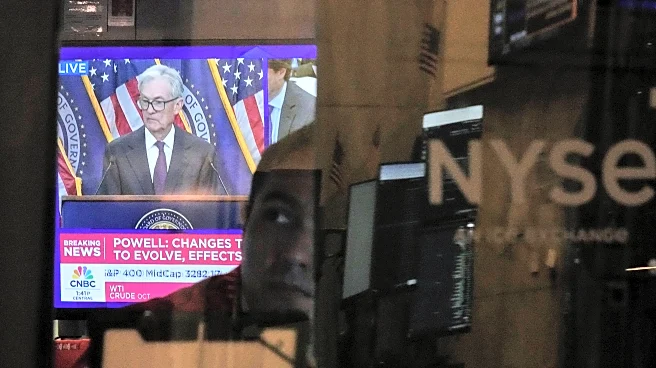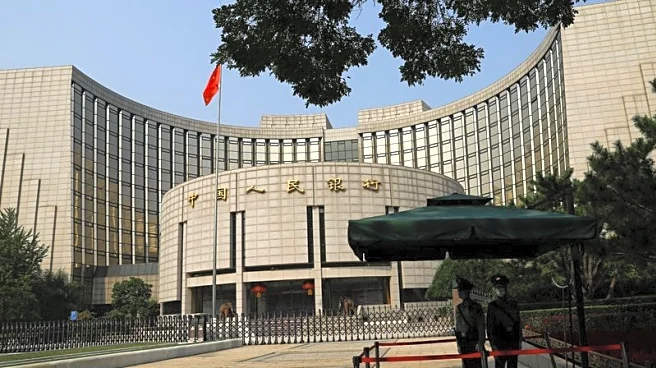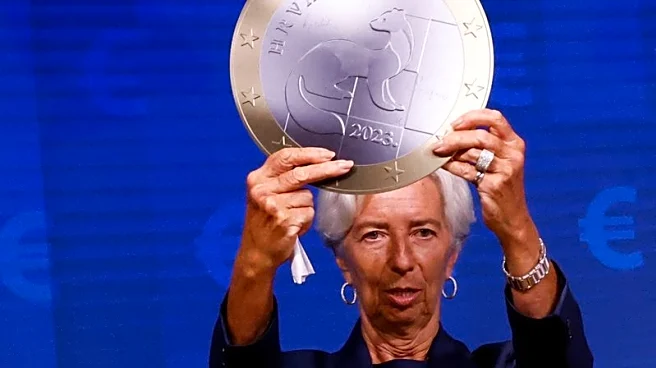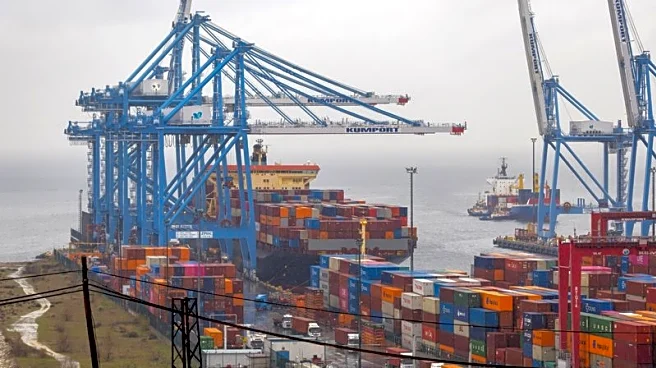What's Happening?
International container rates have experienced a significant decline in recent weeks, influenced by economic signals from the West and the Golden Week holiday in China. The Shanghai-U.S. West Coast route saw a 31% drop in rates, falling to $1,600 per FEU, while the Shanghai-East Coast route decreased by 23% to $2,500 per FEU. Rates from Shanghai to Europe also fell by 9% to $1,000 per TEU. This trend is indicative of potential blanked sailings, as carriers adjust capacity in response to falling demand. Vespucci Maritime analyst Lars Jensen noted that approximately 14% of capacity has been pulled from the Pacific and 17% from Asia and Europe. The decline in rates may be partially attributed to tariffs on China, which are set to increase further unless a new agreement is reached between Beijing and Washington. Additionally, consumer sentiment in the U.S. is affected, with many Americans anticipating a rise in unemployment.
Why It's Important?
The drop in container rates on China-U.S. routes has significant implications for global trade and the shipping industry. Lower rates can benefit shippers by reducing transportation costs, but they also signal reduced demand, which can lead to economic slowdowns. The ongoing trade tensions and tariffs between the U.S. and China continue to impact consumer confidence and economic outlooks. As tariffs increase, the cost of goods may rise, affecting both businesses and consumers. The shipping industry must navigate these challenges by managing capacity and adjusting to fluctuating demand. The broader economic impact includes potential job losses and shifts in trade patterns, which could affect various sectors reliant on international trade.
What's Next?
The shipping industry is likely to continue adjusting capacity through blanked sailings to stabilize rates. Stakeholders will closely monitor trade negotiations between the U.S. and China, as any agreements could alter tariff structures and impact shipping demand. Economic indicators and consumer sentiment will also be key factors in determining future trends in container rates. Businesses and policymakers may need to adapt strategies to mitigate the effects of ongoing trade tensions and economic uncertainties.

